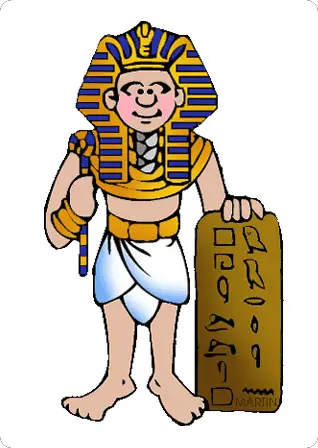Egyptian Slaves
We might be shocked to think of slavery today, but in the time of ancient Egypt, it was a common practice in many cultures and countries.
Some of the slaves in Egypt were the poor of Egypt who had to sell their children into slavery.
Other slaves were brought in from other countries when they won battles and wars or were the result of being sold into slavery by people from other countries.
The Use of Slavery in Ancient Egypt

When we look at all of the incredible buildings and temples in Egypt, we have to realize that many of them were built using slave labor.
Slaves were very important in ancient Egypt as a big part of the labor force, but they were also used for many other purposes.
Many slaves were house servants, gardeners, farm laborers, musicians and dancers of excellent talent, scribes (those that kept written documents), and accountants.
The Influence of Mesopotamia on Slavery in Ancient Egypt
Records show that early Egypt was influenced by other civilizations in the area.
The most advanced civilization was Mesopotamia, and their culture included the use and acceptance of slavery as a part of their lives.
It is thought that almost eighty percent of the Egyptian slaves were peasants. Every year, Egypt has a ‘rainy season’ that causes the Nile River to flood.
The flooding brings in rich soil from the Nile and helps to fertilize the crops. During that three-month time, it is impossible to work the fields, so many of the slaves were moved to new jobs and worked in the construction buildings.
Egyptologists (the people that study Egypt) haven’t found any evidence that slaves were used to building the pyramids.
The information they have found doesn’t show that there were large numbers of slaves during the ‘Old Kingdom’ when the pyramids were built.
Understanding Slavery in Ancient Egypt

There is not a lot of information that can be found on the topic of slaves.
The Egyptians used a style of writing in pictures called hieroglyphs and each picture or ‘cartouche’ could mean one word or many words.
There isn’t a cartouche that represents slaves, so Egyptologists have to do a lot of guessing based on pictures of slaves.
The children of slaves also became the property of the ‘owner’, and the owner was responsible for taking care of his slaves.
It is thought that slaves actually lived a life that was more comfortable than the common peasants, because they were cared for, fed, and didn’t have to pay taxes.
Ancient Egypt’s Respect for Slaves in Royal Families

Slaves of the royal families were held in high regard. Many of the slaves were more educated and used for their knowledge of accounting and writing.
Slaves that were servants cared for every aspect of the royal families, from taking care of the children, cooking, dressing them, and cleaning for them.
It is believed that these slaves were treated almost as well as the higher-ranking Egyptians.
The Impact of War and Conquest
When Egypt won a war against another country, there is evidence that they brought all of the people from that country back to Egypt to become slaves.
Egyptian society was mostly based on passing information from generation to generation and when slaves were added to the social structure, they adopted the same culture.
The information that has been translated seems to show the largest growth in slavery during the New Kingdom era.
This is when Egypt had a large number of military campaigns and wars and brought slaves back with them.
It appears to be a common practice of the pharaohs to give slaves away to higher-ranking officials and nobles in Egypt.
These might have been as payment or a reward for excellent service.
From the few records that are available, it also seems that slave owners preferred foreign slaves instead of native Egyptian slaves.
Foreigners were often better educated and had more talents. Native Egyptian slaves included criminals and commoners.



